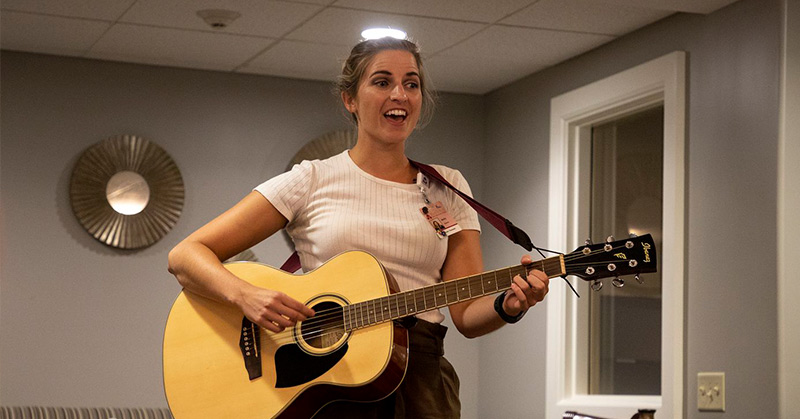After politician Gabrielle Giffords was shot in the head at a Tucson grocery store on a January day in 2011, her road to recovery wasn’t easy. She had to re-learn how to walk, move, and talk. (CNN)
But four years after the incident, Giffords was able to post a special video to Facebook, showing her singing with her former music therapist.
“Great to be back at Houston’s TIRR Memorial Hermann and sing a few lines from Annie with my friend and former music therapist, Maegan. Wonderful people work here, and they do so much to help others get better,” Giffords wrote. (People)
Music therapy played a significant role in Giffords recover plan, and its use is relevant for patients of many types of brain damage or decline.
What is Music Therapy, and Who is It For?
Music therapy is a broad discipline, covering many different types of uses. According to the Canadian Association of Music Therapists (CAMT), music therapy can be useful for:
- Acquired Brain Injury
- AIDS
- Autism and other Pervasive Development Disabilities
- Critical Care
- Developmental Disabilities
- Emotional Traumas
- Geriatric Care
- Hearing Impairments
- Mental Health Difficulties
- Neonatal Care
- Obstetrics
- Oncology
- Pain Control
- Palliative Care
- Personal Growth
- Physical Disabilities
- Speech and Language Impairments
- Substance Abuse
- Teens at Risk
- Victims of Abuse
- Visual Impairments
- And more!
For example, singing can be helpful for people recovering from a stroke or brain injury, like in Gifford’s case, because it can “stimulate the language centers in the brain” and “improve oxygen saturation rates”. (CAMT)
NMT Helping Dementia Patients Get Active
Molly Bybee is a certified music therapist who works in a retirement community in Northeast Philadelphia. She uses a form of music therapy known as neurologic music therapy (NMT) to help dementia patients exercise. (Inquirer)
“NMT differs from traditional Music Therapy as it views music not as a social science model for well being, but as a neuroscience model, where music is a hard-wired brain language.”
Med Rhythms Therapy
By adjusting rhythm, volume, and pitch, Bybee can cue better and more coordinated movements during her Movers & Shakers group sessions. (Inquirer)
In a typical class, she’ll start by helping patients focus their full attention on her. She’ll greet each senior by name (with a tune, of course), ask them to recall what day and month it is, and begin a game of catch to warm up.
Next, Bybee will hand out small percussion instruments like maracas or tambourines, which encourage more movement. The group will sing songs together and go through a thoughtfully choreographed exercise, which Bybee reinforces through song.
If she wants her class to raise their hands, she’ll sing and play higher notes. If she wants bigger movements, she’ll sing louder. Faster movements? She’ll pick up the pace of her song. (Inquirer)
At the end of her class, she’ll sing a familiar goodbye song and call on patients to fill in some missing words.
These NMT techniques can help seniors with dementia better understand instructions, have improved attention and recall, and help calm down those who struggle with confusion. (Inquirer)
According to the UK based Alzheimer’s Society, exercise is an important piece of treatment for patients with dementia. It can:
- Improve sleep quality
- Slow cognitive decline
- Provide opportunities to socialize
- Boost mood
- Maintain joint mobility
- Support a healthy cardiovascular system (Alzheimer’s Society)
If NMT can encourage dementia patients to stay fit, all the better.
Watch Neurologic Music Therapy in action:
Read Next: 9 Popular Drugs Linked to Dementia and Memory Loss

